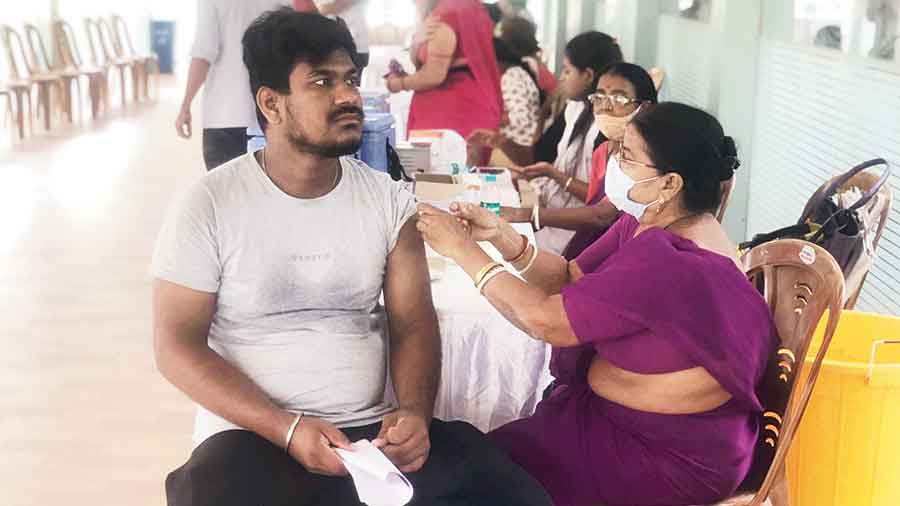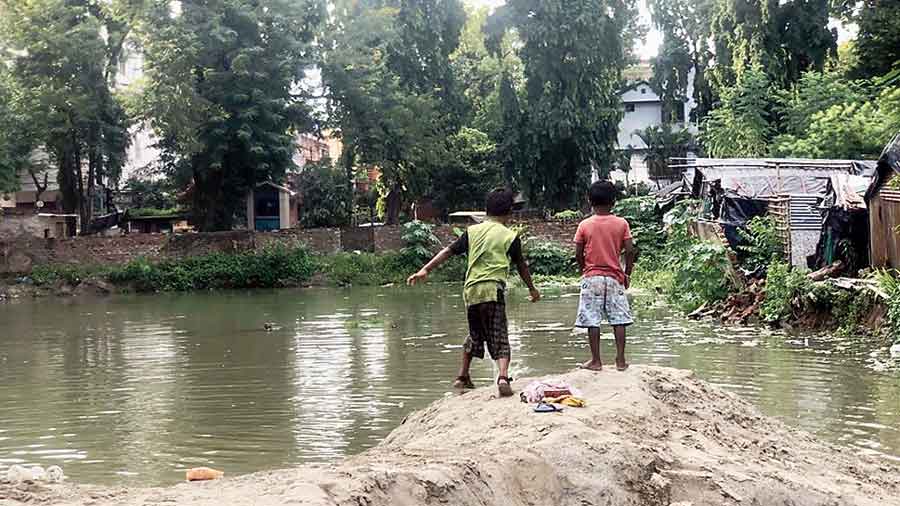Despite having stagnant water accumulating on their premises, many Salt Lake homes are escaping the notice of dengue surveillance teams as residents refuse to let the health workers in.
“Salt Lake residents don’t let us in and in New Town, security guards don’t even let us through the gates of housing complexes. This despite offering our identity cards for verification,” said Pinky Das, a health department worker who goes out on field visits to check for accumulated water and identify dengue patients.
“From the street below, we see flower pots on residents’ windows and balconies and know that many a times, water accumulates in the bowls they place these pots in. But we are helpless unless allowed to check and point it out to residents,” Das said.
Other common spots are behind fridges, where the fridge sometimes drips water, and in bowls that people lay out for street dogs to drink from. In buildings with lifts and under-construction lifts, the underground pits gather water after heavy rains too.
“So many residents here are senior citizens…may be 85-year-olds completely dependent on domestic helps. Even if they themselves are aware of dengue prevention measures, the helps can’t be bothered to abide by them and the residents aren’t in a position to monitor them,” added Subhro Dey, another health department staffer.

The Covid vaccination camp on at BE Block last week
As per official count, 185 dengue cases were reported in the month of August, out of which 140 affected were in the previous three weeks alone.
Das said they find most dengue cases in slum areas. She recently found one in Naobhanga, Sector IV. “These are places where residents fill up water from the corporation’s taps (time kol) and store them in open containers. I’ve seen larvae inside these containers, plastic bags, ice cream cups and clay cups dumped outside such homes,” she said. “If we spot these, we pour burnt engine oil or kerosene in them and instruct the residents, who are clueless about how these facilitate mosquito breeding despite all the awareness efforts the government makes.”
At present, anyone reporting even a single day of fever is being asked to go for dengue and malaria tests and the health workers are providing them ORS and following up on their health later. “A fresh drive started on September 5 to ensure the Pujas are a safe period for everyone,” Das said.
Vaccine mop-up drive
The health workers were spotted at a Covid vaccination camp in BJ Block on August 3, where they registered 121 candidates for Covishield and 26 for Covaxin. Ninety-nine per cent of these had come for booster shots.
“Very few came for first or second doses and even these were special cases,” explained Das, who was at the camp organised by Ward 29 in BJ Block. “For instance, some women had long been eligible for their jabs but had put off taking them as they were pregnant before.”
A single student had come for the Corbevax jab, that is given to those aged between 12 and 18 years, but he was sent to Matri Sadan. “Each vial has 20 doses and they have to be discarded unless injected within four hours of opening. So we aren’t opening a vial unless we get at least 15-16 candidates. So we asked the student to get jabbed at Matri Sadan in EE Block instead,” added Dey.
Another mop-drive took place at the glass house in BE Block the same day, organised by Ward 31. It was clear from the registration figures that here too, most residents of the block were fully vaccinated.
“Our previous camp, in July, drew a lot of people. About 350 residents had showed up then. Today we only got 140-150 people, most of whom had come for booster shots. Six or seven students came for Corbevax, one person came for his second dose and no one for his first,” said Sujata Maitra, a ward worker.
“I have been eligible for my booster for a while but could only come today as the camp was on a convenient day,” said Sabita Mondal of BE Block.
